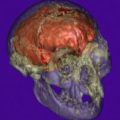
Emotions linked to our moral sense awaken slowly in the mind, according to a new study by researchers at the University of Southern California (USC). The finding suggests that digital media culture may be better suited to some mental processes than others. “For some kinds of thought, especially moral decision-making about other people’s social and psychological situations, we need to allow for adequate time and reflection,” said researcher Mary Helen Immordino-Yang.
While humans can sort information very quickly and can respond in fractions of seconds to signs of physical pain in others, admiration and compassion – two of the social emotions that define humanity – take much longer, the study found. “…The study [published in the Proceedings of the National Academy of Sciences] has extraordinary implications for the human perception of events in a digital communication environment,” said media scholar Manuel Castells, holder of the Wallis Annenberg Chair of Communication Technology and Society at USC. “Lasting compassion in relationship to psychological suffering requires a level of persistent, emotional attention.”
However, once awakened, the responses lasted far longer than the volunteers’ reactions to stories focused on physical pain. The study raises questions about the emotional cost – particularly for the developing brain – of heavy reliance on a rapid stream of news snippets obtained through television, online feeds or social networks such as Twitter. “If things are happening too fast, you may not ever fully experience emotions about other people’s psychological states and that would have implications for your morality,” Immordino- Yang said.
As a former public junior high school teacher who pioneered a doctoral thesis track on learning and the brain at Harvard University, and who holds a joint appointment in the Rossier School of Education along with her assistant professorship in the institute (part of the USC College of Letters, Arts and Sciences), Immordino-Yang stressed the study’s relevance to teaching. “Educators are charged with the role of producing moral citizens who can think in ethical ways, who feel responsible to help others less fortunate, who can use their knowledge to make the world a better place,” she said. “And so we need to understand how social experience shapes interactions between the body and mind, to produce citizens with a strong moral compass.”
Clearly, normal life events will always provide opportunities for humans to feel admiration and compassion. But fast-paced digital media tools may direct some heavy users away from traditional avenues for learning about humanity, such as engagement with literature or face-to-face social interactions. Immordino-Yang did not blame digital media. “It’s not about what tools you have, it’s about how you use those tools,” she said.
Castells said he was less concerned about online social spaces, some of which can provide opportunities for reflection, than about “fast-moving television or virtual games.”
“In a media culture in which violence and suffering becomes an endless show, be it in fiction or in infotainment, indifference to the vision of human suffering gradually sets in,” he said.
Damasio agreed: “What I’m more worried about is what is happening in the (abrupt) juxtapositions that you find, for example, in the news. When it comes to emotion, because these systems are inherently slow, perhaps all we can say is, not so fast.”
The study, titled “Neural Correlates of Admiration and Compassion,” takes a positive tack in research on emotion and the brain. Damasio called the study “the first to investigate the neural bases of admiration and one of the first to deal with compassion in a context broader than physical pain. To say that admiration has been neglected is an understatement.” Many previous studies have focused on negative emotions such as fear. By studying admiration, Damasio’s group is focusing on those impulses that bring out the best in humanity.
Admiration, Damasio said, “gives us a yardstick for what to reward in a culture, and for what to look for and try to inspire.” He and Hanna Damasio, co-director of the institute and director of the Dornsife Imaging Center in the USC College, chose the study of admiration as one of the institute’s founding projects.
From Presidents Obama and Clinton to foster kids down the block, stories abound of individuals who have transcended their situations because of admiration for a key person in their lives. “We actually separate the good from the bad in great part thanks to the feeling of admiration,” Damasio said. “It’s a deep physiological reaction that’s very important to define our humanity.”
It is also deeply rooted in the brain and the sense of the body, the study found, engaging primal neural systems that regulate blood chemistry, the digestive system and other parts of the body. Damasio called it proof, pending replication of this study by other groups, that social emotions have deep evolutionary roots. “People generally don’t think of emotions like admiration and compassion as having forerunners in evolution,” he noted. “We reveal that these emotions engage the basic systems of our physiology.”
For Immordino-Yang, who focused on literature as an undergraduate, the study presented an intriguing test of the ancient poetic trope that compares deep emotion to physical injury – a “broken heart” being the obvious example. “The poets had it right all along,” she said. “This isn’t merely metaphor. Our study shows that we use the feeling of our own body as a platform for knowing how to respond to other people’s social and psychological situations. These emotions are visceral, in the most literal sense – they are the biological expression of ‘do unto others as you would have them do unto you.’ “.
Finally, the study showed that physical and social pain engage the posteromedial cortex, a central hub in the brain related to the sense of self and consciousness. In keeping with that finding, volunteers reported a heightened sense of self-awareness after hearing the stories. Many expressed a desire to lead better lives. Some even refused the customary payment for participation, Immordino-Yang said. Intriguingly, the posteromedial cortex appears to use different areas for responding to physical or social pain. “The brain is honoring a distinction between things that have to do with physicality and things that have to do with the mind,” Damasio concluded.
Related:
The Information Insurgency
MySpace And The Dumbing Down Of Friendship
The neurobiology of wisdom
Musicians’ brains optimized to identify emotion
Psychiatric disorders common among young adults


















Comments are closed.